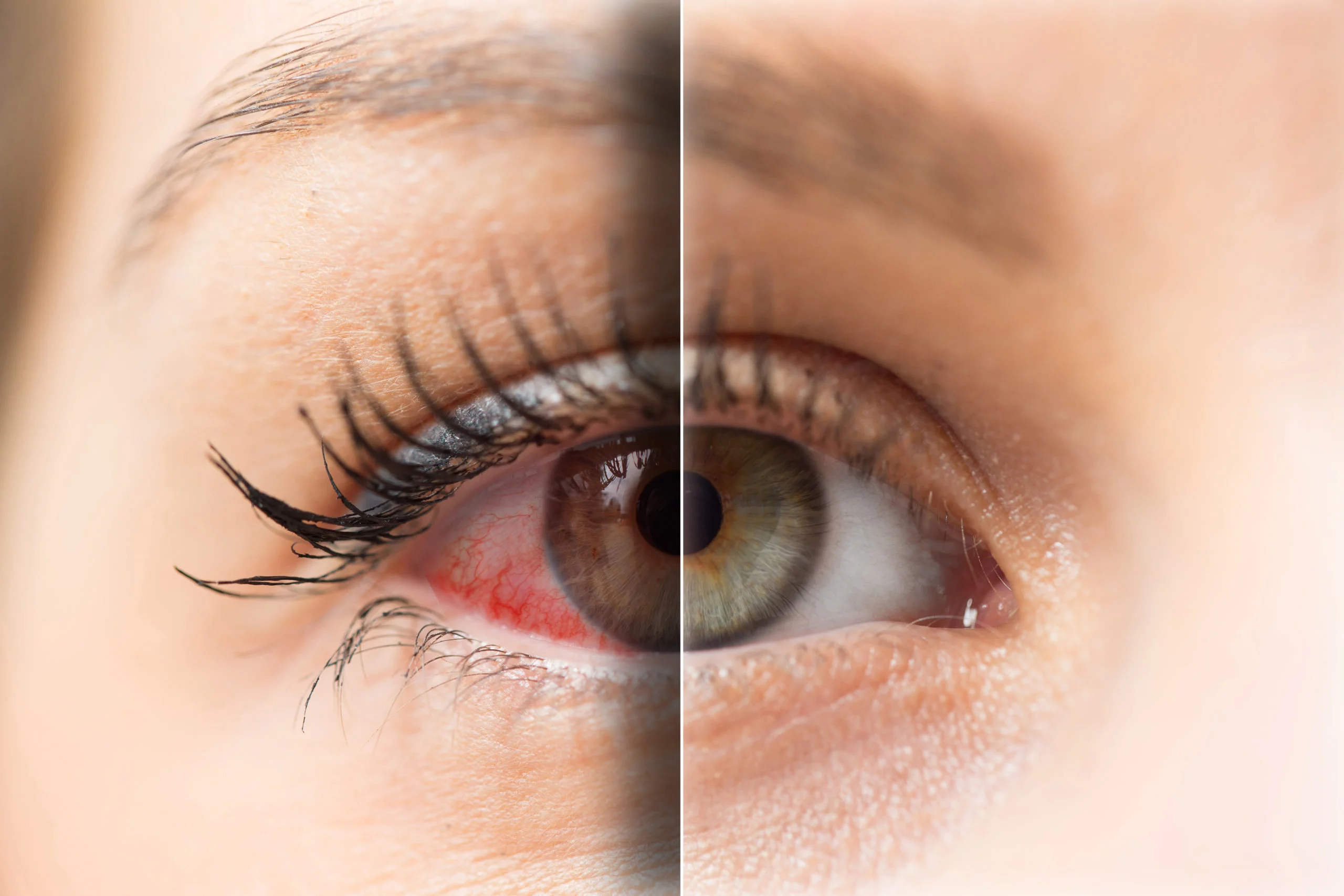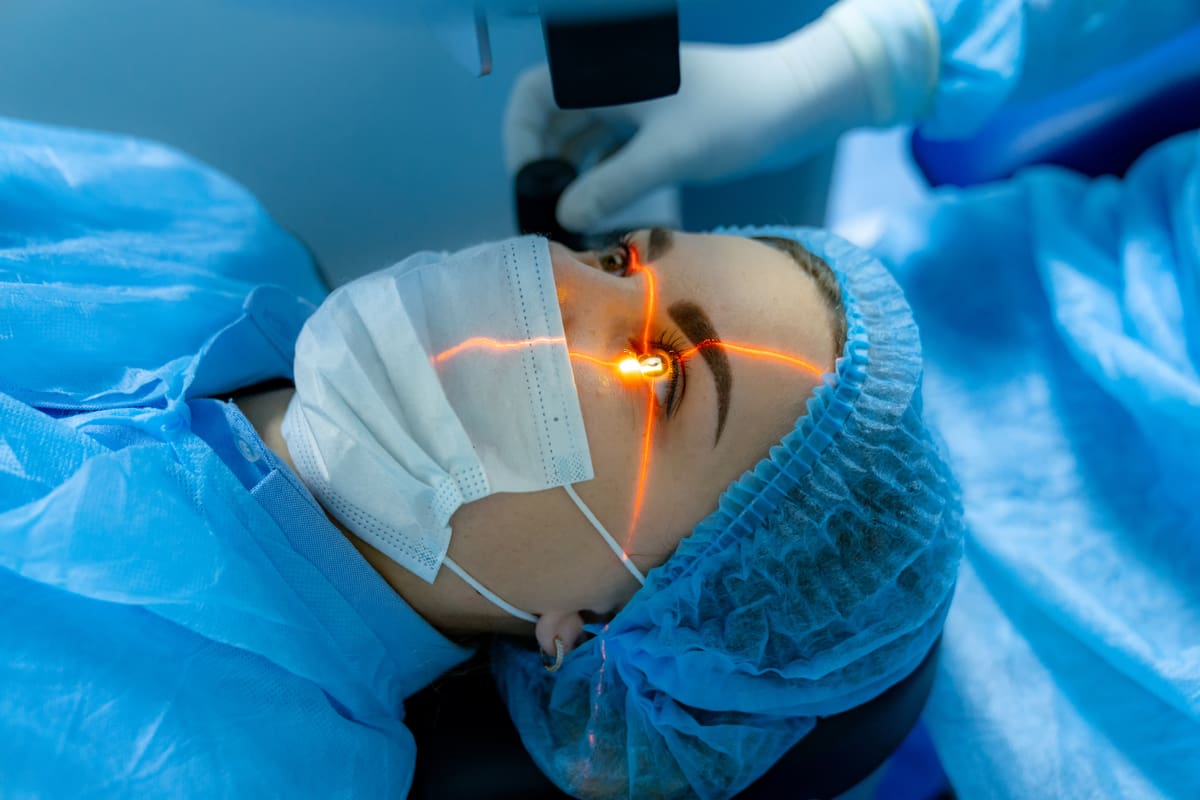
Glaucoma
In many cases, eye drops are sufficient to treat glaucoma. However, sometimes the treatment is not tolerated or the effect of eye drops is insufficient.
In these cases, minimally invasive procedures can preserve your vision: laser treatments, micro-implants, or gentle surgical procedures that can improve the outflow of aqueous humor are available.
NEW: Glaucoma – Excimer Laser Trabeculotomy
This minimally invasive procedure takes only a few minutes and effectively lowers intraocular pressure. Using a laser fiber, up to 10 tiny spots are created in the trabecular meshwork. This establishes a direct connection between the anterior chamber of the eye and Schlemm's canal, through which aqueous humor is drained. The outflow resistance is reduced, and intraocular pressure decreases. ELT can also be performed concurrently with cataract surgery.
Please provide information about the Excimer Laser Trabeculotomy procedure at the Regensburg Eye Clinic.


Intraocular lenses (IOLs)
In glaucoma, the optic nerve is damaged by excessively high intraocular pressure
Selective laser trabeculoplasty (SLT) is a gentle treatment that improves the outflow of aqueous humor. SLT can be a valuable adjunct or alternative to treatment with pressure-lowering eye drops. The procedure involves the use of a laser to treat the trabecular meshwork in the angle of the anterior chamber. The brief laser pulses activate the body’s own remodeling processes, which increase the permeability of the trabecular meshwork to aqueous humor and reduce intraocular pressure. Unlike traditional laser treatment (ALT), SLT does not cause scarring in the angle of the anterior chamber.
Selective laser trabeculoplasty is a treatment of the drainage canal using a laser to improve the outflow of aqueous humor in the angle of the anterior chamber
Ultrashort laser pulses stimulate cells in the trabecular meshwork, reducing the outflow resistance of aqueous humor. The treatment is painless and is typically performed on an outpatient basis. The treatment can reduce or even eliminate the need for glaucoma eye drops. Clinical studies have shown no adverse side effects, and the treatment can be repeated if necessary.
What are the steps involved in the treatment?
SLT treatment is painless and is usually performed on an outpatient basis. The treatment itself lasts only a few minutes. After administering anesthetic eye drops, the laser treatment is performed under the direct supervision of the treating ophthalmologist using a contact lens. The effect of the treatment is usually measurable within a few days by a decrease in intraocular pressure. The treatment can be repeated if necessary.
Laser procedures. Surgical treatments for glaucoma:
Short, low-energy laser pulses from a diode laser are applied to the trabecular meshwork of the angle of the anterior chamber using a slit lamp. This laser treatment is very gentle and improves the outflow of aqueous humor. In most cases, the laser treatment leads to a reduction in intraocular pressure, allowing for a significant reduction in the use of eye drops for extended periods.
In minimally invasive glaucoma surgery (MIGS), small implants are inserted into the angle of the anterior chamber to improve the outflow of aqueous humor. We use the iStent and the XEN implant in our practice.
Cyclophotocoagulation (CPC) also uses a diode laser to cauterize a portion of the ciliary body, which produces aqueous humor. With this procedure, the production of aqueous humor is reduced in a controlled manner with each treatment. It’s important to avoid lowering the intraocular pressure too drastically at once to prevent a permanently low intraocular pressure.
Trabeculectomy remains the most effective form and the ‘gold standard’ of filtering glaucoma surgery, where aqueous humor is diverted from the anterior chamber of the eye through a channel and a flap in the sclera (white part of the eye) under the conjunctiva. So-called anti-mitotic agents (like Mitomycin C) can help to prevent long-term scarring of the filtration channel.
If the angle of the anterior chamber is too narrow, a window-like opening can be created in the edge of the iris using a pulsed YAG laser. This breaks up the blockage of the angle of the anterior chamber by the iris and widens the angle.
In canaloplasty, the Schlemm’s canal, the natural drainage pathway for aqueous humor, is widened 360 degrees using a very fine catheter.
Risk Factors
Glaucoma can affect anyone. The following conditions are considered significant risk factors: low blood pressure, family history of glaucoma, tendency towards poor circulation in the hands and feet, injuries or inflammation inside the eye, and long-term corticosteroid treatment.

